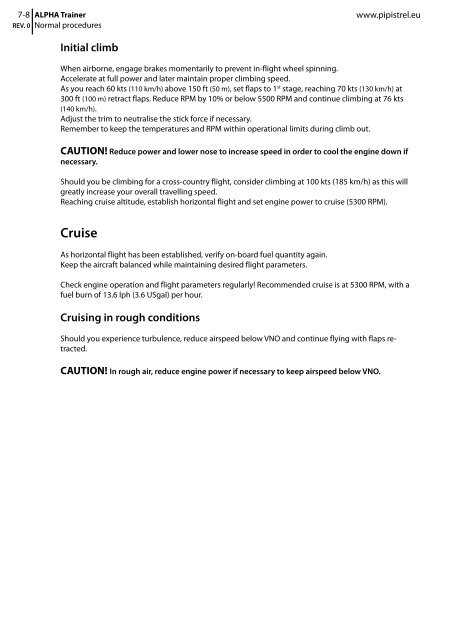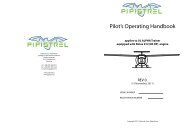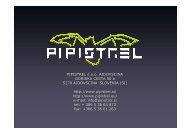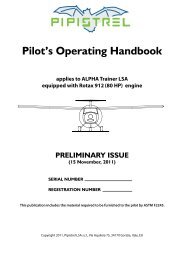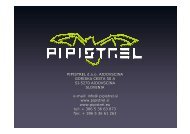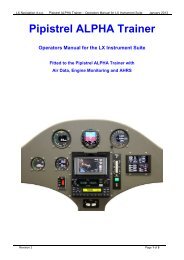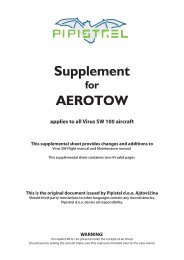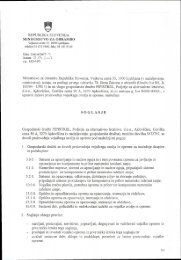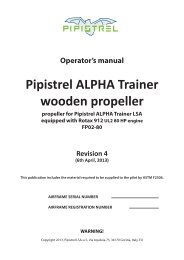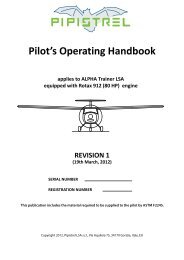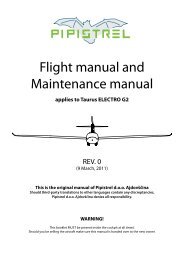You also want an ePaper? Increase the reach of your titles
YUMPU automatically turns print PDFs into web optimized ePapers that Google loves.
7-8 <strong>ALPHA</strong> <strong>Trainer</strong><br />
REV. 0 Normal procedures<br />
www.pipistrel.eu<br />
Initial climb<br />
When airborne, engage brakes momentarily to prevent in-flight wheel spinning.<br />
Accelerate at full power and later maintain proper climbing speed.<br />
As you reach 60 kts (110 km/h) above 150 ft (50 m), set flaps to 1 st stage, reaching 70 kts (130 km/h) at<br />
300 ft (100 m) retract flaps. Reduce RPM by 10% or below 5500 RPM and continue climbing at 76 kts<br />
(140 km/h).<br />
Adjust the trim to neutralise the stick force if necessary.<br />
Remember to keep the temperatures and RPM within operational limits during climb out.<br />
CAUTION! Reduce power and lower nose to increase speed in order to cool the engine down if<br />
necessary.<br />
Should you be climbing for a cross-country flight, consider climbing at 100 kts (185 km/h) as this will<br />
greatly increase your overall travelling speed.<br />
Reaching cruise altitude, establish horizontal flight and set engine power to cruise (5300 RPM).<br />
Cruise<br />
As horizontal flight has been established, verify on-board fuel quantity again.<br />
Keep the aircraft balanced while maintaining desired flight parameters.<br />
Check engine operation and flight parameters regularly! Recommended cruise is at 5300 RPM, with a<br />
fuel burn of 13.6 lph (3.6 USgal) per hour.<br />
Cruising in rough conditions<br />
Should you experience turbulence, reduce airspeed below VNO and continue flying with flaps retracted.<br />
CAUTION! In rough air, reduce engine power if necessary to keep airspeed below VNO.


